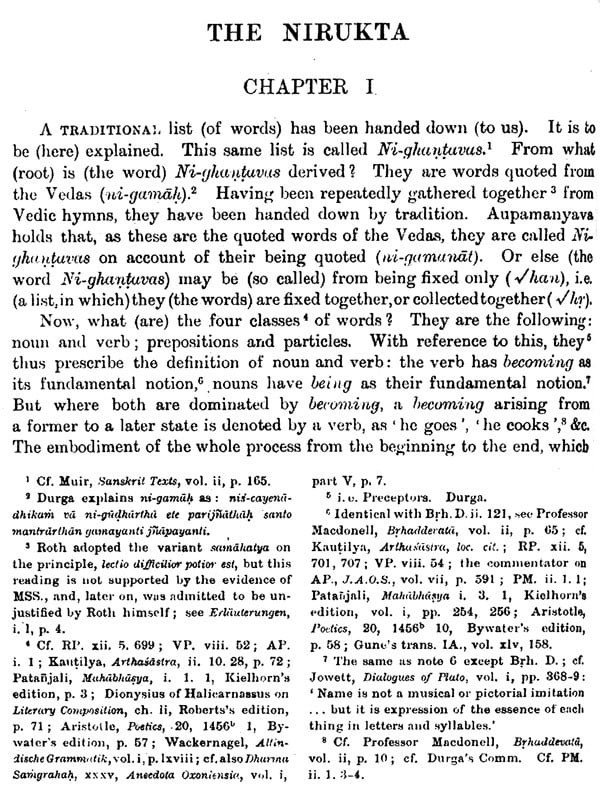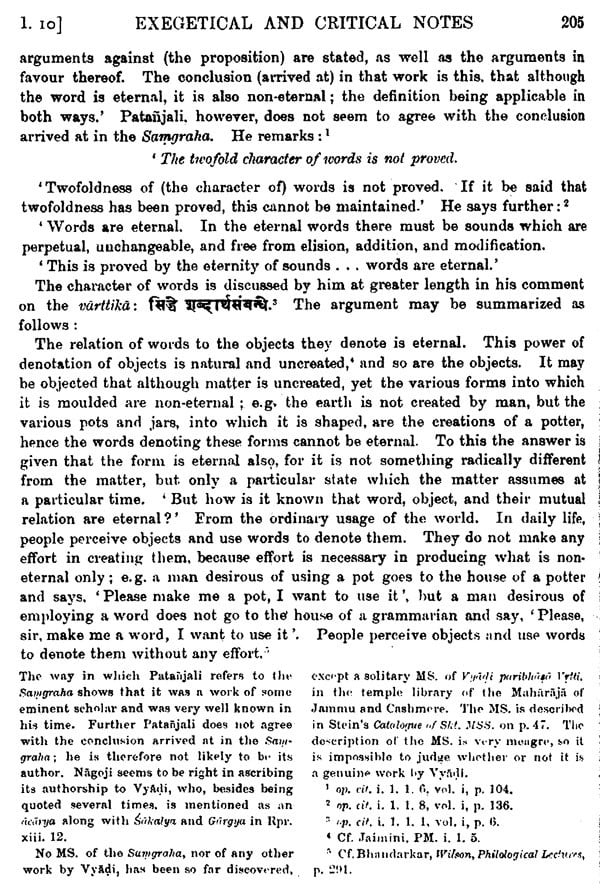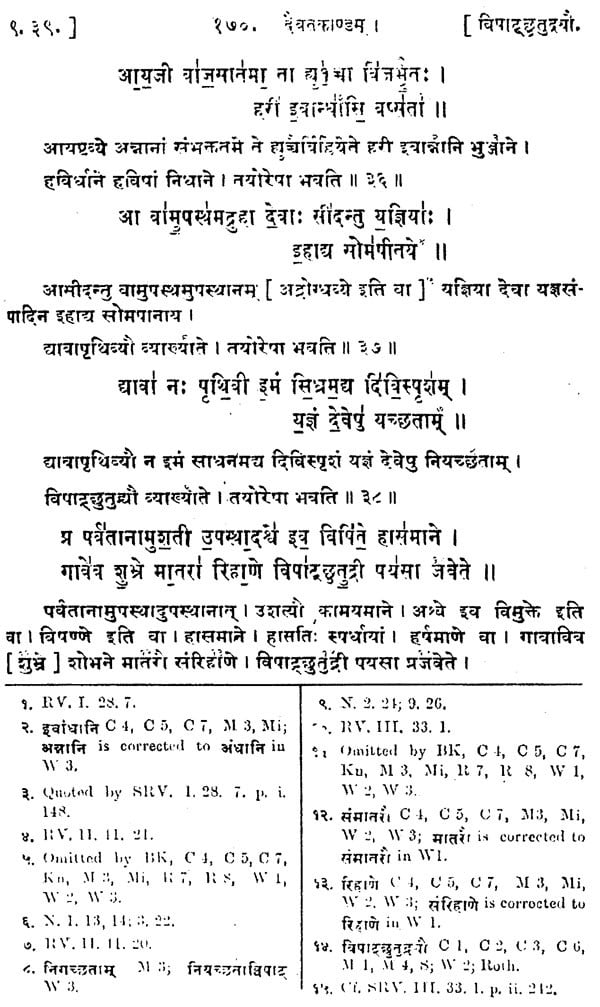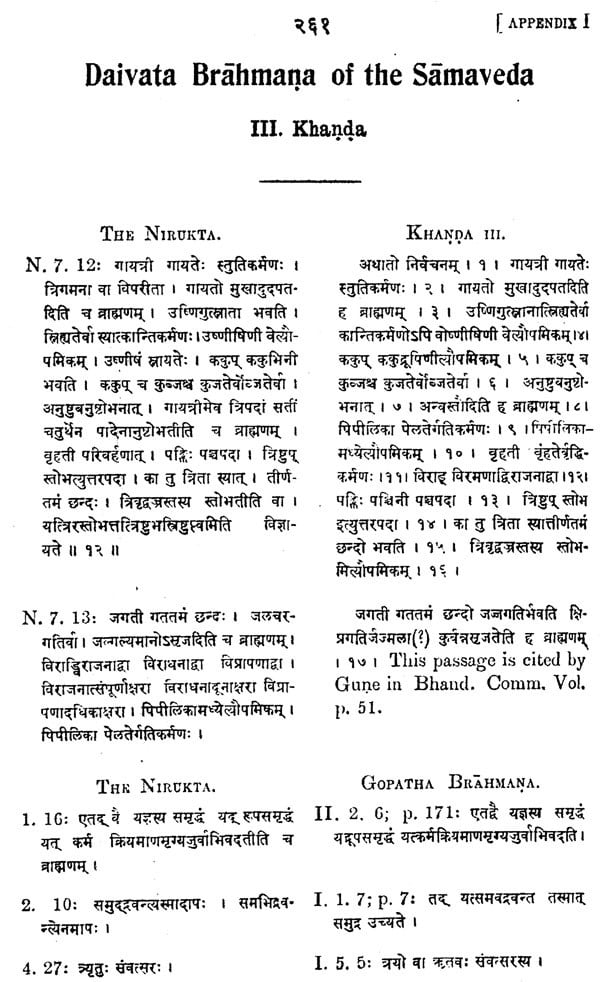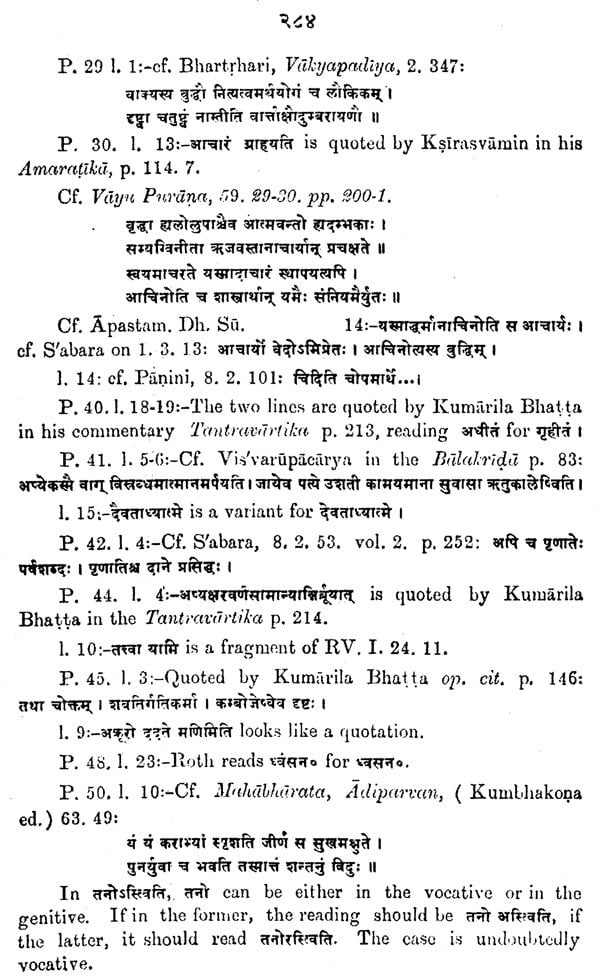
The Nighantu And The Nirukta : The Oldest Indian Treatise on Etymology, Philology and Semantics
Book Specification
| Item Code: | IDE482 |
| Author: | Lakshman Sarup |
| Publisher: | MOTILAL BANARSIDASS PUBLISHERS PVT. LTD. |
| Language: | Sanskrit and English |
| Edition: | 2015 |
| ISBN: | 9788120813816 |
| Pages: | 577 |
| Cover: | Hardcover |
| Other Details | 9.0 inch X 6.0 inch |
| Weight | 700 gm |
Book Description
From the Jacket:
The Nighantus are the glossaries or lists of rare and obscure words occurring in the Vedic hymns. According to Yaska they were collected and classified by the descendants of ancient sages for the easier understanding of the Vedic texts.
The Nirukta is a famous work of Yaska. It is the oldest Indian Treatise on Etymology, Philology and Semantics. This being a commentary on the Nighantus, collection of obscure words which tradition ascribes also to Yaska, follows the three-fold division of the contents of the Nighantus. There are three sections in the Nirukta, viz. Naighantuka Kanda (consisting of lists in which Vedic words are collected under certain main ideas), Naigama Kanda or Aikapadika (containing a list of ambiguous and particularly difficult word of the Vedas) and Daivanta-Kanda (classification of deities according to the three regions: earth, sky and heaven).
The book is divided into three parts. These contain Introduction, Translation and Sanskrit Text, accompanied by exegetical and critical notes, indices and Appendices.
| PART I | ||||
| Preface | 1 | |||
| I. | INTRODUCTION TO THE NIGHANTU | |||
| a. | Detailed description of Manuscripts | 5 | ||
| b. | Two recensions | 9 | ||
| c. | Devaraja and his commentary | 10 | ||
| d. | Roth's edition of the Nighantu | 11 | ||
| e. | Bibliotheca Indica edition of the Nighantu | 12 | ||
| f. | Title of the work | 13 | ||
| g. | Division of the Nighautu | 13 | ||
| h. | Author of the Nighautu | 14 | ||
| II. | INTRODUCTION TO THE NIRUKTA | |||
| a. | Earlier editions of the Nirukta | 15 | ||
| b. | Detailed description of the Manuscripts | 19 | ||
| c. | Relationship of the Manuscripts - two recensions | 39 | ||
| d. | Omissio ex homoeleleuto in Sanskrit Manuscripts | 40 | ||
| e. | Dittography in Sanskrit Manuscripts | 41 | ||
| f. | 1. Three Stages of interpolations | 45 | ||
| 2. Parallel instance of Servius, commentator of Virgil | 48 | |||
| g. | Commentators of Yaska | 49 | ||
| h. | Yaska's contributions to Etymology, Philology and Semanties | 53 | ||
| 1. | Date of Yaska | 53 | ||
| 2. | Phonetic equipment of Yaska | 54 | ||
| 3. | Importance of Etymology | 56 | ||
| 4. | Principles of Etymology | 57 | ||
| 5. | Plato on Etymology | 63 | ||
| 6. | Philological speculations of Yaska | 64 | ||
| 7. | Origin of Language | 65 | ||
| 8. | Parts of Speech | 66 | ||
| 9. | Aristotle's definition of Noun and Verb | 66 | ||
| 10. | Semantics. How names are given: Criticism and Rejoinder | 68 | ||
| i. | Early anti-Vedic Scepticism | 71 | ||
| PART II | |
| Preface | 3 |
| List of Abbreviations | 4 |
| CHAPTER I | |
| Four classes of words | 5 |
| Prepositions | 7 |
| Particles | 8 |
| Expletives | 13 |
| Are all nouns derived from verbs? | 14 |
| The Kautsa controversy | 16 |
| Importance of etymology | 18 |
| Compilation of the Nighantu | 20 |
| CHAPTER II | |
| Principles of Etymology | 21 |
| Sakapuni and a deity | 27 |
| Devapi and Santanu | 28 |
| Vrtra | 31 |
| Visvamitra and the Rivers | 35 |
| CHAPTER III | |
| Inheritance | 39 |
| Brotherless maiden | 41 |
| Fingers | 43 |
| Synonyms of beauty | 47 |
| Niyoga | 48 |
| Similes | 49 |
| Onomatopoeia | 51 |
| Synonyms of Heaven and Earth | 55 |
| CHAPTER IV | |
| Homonyms | 56 |
| Jathara | 59 |
| Kayamana | 61 |
| Dayamana | 63 |
| Vyantah | 65 |
| Erire | 67 |
| Anta | 69 |
| Varya | 71 |
| CHAPTER V | |
| Vanusyati | 71 |
| Varaha | 75 |
| Visnu | 77 |
| Adhrigu | 79 |
| Vajapas | 81 |
| Nicumpu | 83 |
| Krtti | 85 |
| Prthak | 87 |
| Srni | 89 |
| CHAPTER VI | |
| Virudhah | 91 |
| Indra and the Seers | 93 |
| Asih | 95 |
| Kimidin | 97 |
| Jarayayi | 99 |
| Amina | 101 |
| Ghramsa | 102 |
| Pratadvasu | 105 |
| Bekunata | 107 |
| Sirimbitha | 109 |
| Bunda | 111 |
| CHAPTER VII | |
| Nature of Stanzas | 113 |
| Deity | 115 |
| Are Gods anthropomorphic | 116 |
| Metres | 119 |
| Agni | 121 |
| Jatavedah | 123 |
| Vaisvanara | 123 |
| CHAPTER VIII | |
| Dravinoda | 129 |
| Barhih | 133 |
| Tvastr | 135 |
| Apri | 138 |
| Sakuni | 139 |
| Dice | 141 |
| Quiver | 143 |
| Whip | 145 |
| Rivers | 147 |
| Wilderness | 149 |
| Ends of the Bow | 151 |
| CHAPTER X | |
| Vayu | 153 |
| Rudra | 155 |
| Brhaspati | 157 |
| Yama | 159 |
| Ka | 161 |
| Tarkeya | 163 |
| Vata | 165 |
| Indu | 167 |
| CHAPTER XI | |
| Soma | 169 |
| Death | 171 |
| Maruts | 173 |
| Aptyah | 175 |
| Sarasvati | 177 |
| Sinivali | 179 |
| Gauri | 181 |
| Ha | 183 |
| CHAPTER XII | |
| Asvins | 184 |
| Bhaga | 189 |
| Varuna | 191 |
| Seven Seers | 196 |
| Divine womeu | 199 |
| Exegetical and Critical Notes | 200 |
| Appendix Alphabetical list of Stories related in the Nirukta | 246 |
| Index of Authorities cited in the Nirukta | 247 |
| List of Quotations occurring in the Nirukta, arranged in the order of the Samhitas | 248 |
| PART III | |
| SANSKRIT TEXT | 1-287 |
Book's Contents and Sample Pages
